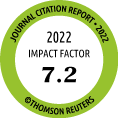Return to content in this issue
Molecular Profile of Sensitization to Dermatophagoides pteronyssinus Dust Mite in Portugal
Limão R1,2, Spínola Santos A1,2, Araújo L3,2, Cosme J1,2, Inácio F4,2, Tomaz E4, Ferrão A5, Santos N6, Sokolova A7,2, Môrete A8, Falcão H9, Cunha L9, Ferreira A10, Bras A11, Ribeiro F11, Lozoya C12, Leiria Pinto P13, Prates S13, Plácido J14, Coimbra A14, Taborda-Barata L15, Pereira Santos MC16,2, Pereira Barbosa M1,17,16, Pineda F18
1Immunoallergology Department, Hospital de Santa Maria, Centro Hospitalar Universitário Lisboa Norte, Portugal
2Allergen and Immunotherapy Interest Group, Sociedade Portuguesa de Alergologia e Imunologia Clínica, Portugal
3Immunoallergology Department, Faculdade de Medicina da Universidade do Porto, Portugal
4Immunoallergology Department, Hospital de São Bernardo, Setúbal, Portugal
5Immunoallergology Unit, Hospital do Espírito Santo de Évora, Portugal
6Immunoallergology Unit, Hospital de Portimão, Centro Hospitalar Universitário do Algarve, Portugal
7Immunoallergology Unit, Hospital Professor Doutor Fernando Fonseca, Amadora-Sintra, Portugal
8Immunoallergology Unit, Hospital de Aveiro, Centro Hospitalar Baixo Vouga, Portugal
9Immunoallergology Department, Hospital de Santo António, Centro Hospitalar do Porto, Portugal
10Immunoallergology Unit, Hospital das Forças Armadas, Lisboa, Portugal
11Immunoallergology Unit, Hospital de Faro, Centro Hospitalar Universitário do Algarve, Portugal
12Immunoallergology Unit, Unidade Local de Saúde de Castelo Branco, Portugal
13Immunoallergology Department, Hospital Dona Estefânia, Centro Hospitalar Universitário de Lisboa Central, Portugal
14Immunoallergology Department, Centro Hospitalar Universitário de São João, Porto, Portugal
15Immunoallergology Department, Centro Hospitalar Universitário Cova da Beira, Covilhã, Portugal
16Clinical Immunology Laboratory, Faculdade de Medicina, Instituto de Medicina Molecular, Universidade de Lisboa, Portugal
17University Clinic of Immunoallergology, Faculdade de Medicina da Universidade de Lisboa, Portugal
18Diater Laboratorio de Diagnostico y Aplicaciones Terapeuticas SA, Madrid, Spain
J Investig Allergol Clin Immunol 2022; Vol 32(1)
: 33-39
doi: 10.18176/jiaci.0533
Objective: To analyze component-resolved diagnosis of sensitization to Dermatophagoides pteronyssinus (Der p) in patients with respiratory allergy and the association between diagnostic findings and clinical severity in different geographical areas.
Methods: The study population comprised 217 patients (mean age, 25.85 [12.7] years; 51.16% female) selected from 13 centers in Portugal (5 from the North, n=65). All had allergic rhinitis with or without asthma and positive skin prick test results to at least 1 dust mite. Specific IgE (sIgE) to Der p, Dermatophagoides farinae, Lepidoglyphus destructor, Der p 1, Der p 2, Der p 10, and Der p 23 was determined using ImmunoCAP. The Mann-Whitney test was applied for the following comparisons: rhinitis vs rhinitis and asthma; mild vs moderate-to-severe rhinitis; North vs South.
Results: The prevalence of sensitization was 98.2% for Der p, and 72.4%, 89.4%, 9.7%, and 77% for Der p 1, Der p 2, Der p 10, and Der p 23, respectively. The corresponding median sIgE levels were 8.56, 17.7, 0.01, and 3.95 kUA/L. sIgE to all allergens was higher in patients with moderate-to-severe rhinitis and rhinitis with asthma (nonsignficant). Concentrations of sIgE to Der p 2 were significantly higher in the South than in the North (P=.0496).
Conclusions: The most common sensitization in Portugal was to Der p. The highest prevalence and median sIgE level were observed for Der p 2. All sIgE values for molecular components were higher in more symptomatic patients (nonsignificant). Concentrations of sIgE to Der p 2 were higher in the South, probably because of the warmer temperature and/or the larger sample size.
Key words: Allergy, Asthma, Component Resolved Diagnosis, Dermatophagoides pteronyssinus, Dust Mites, Rhinitis, Specific IgE



